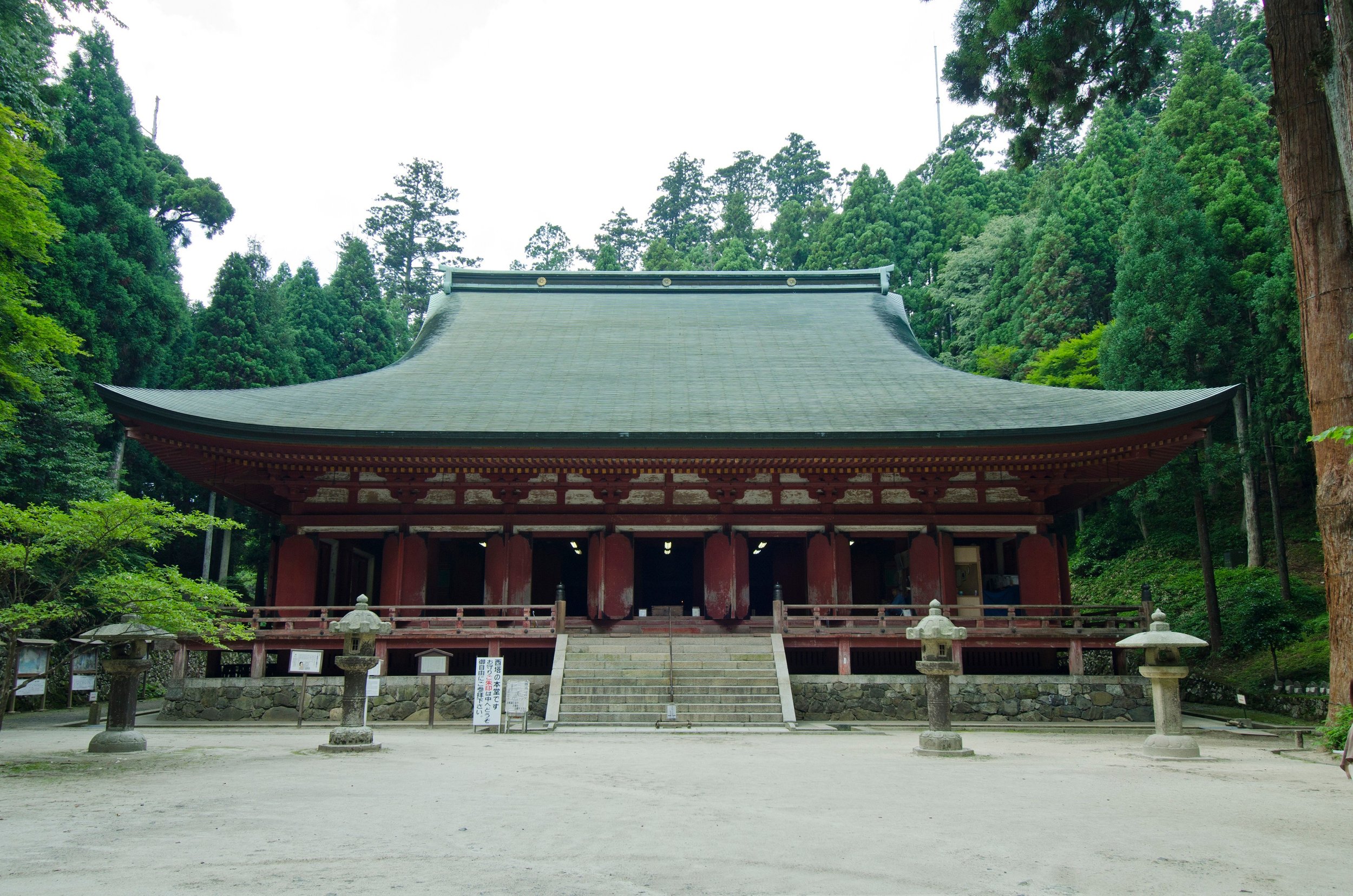Walk Kyoto to Otsu
Home to a cornucopia of culture, history and nature
The reflective blue waters of a lake; old pilgrim paths cutting through trees; dramatic tales of warrior monks – plus a string of breathtaking temples and shrines, hidden in sacred mountainside forests. The list of reasons to visit Otsu is as long as it is varied.
The small city fringes the southern shores of Lake Biwa, the nation’s largest freshwater lake, and is home to a cornucopia of culture, history and nature. And perhaps best of all? Getting to Otsu couldn’t be easier: the city is just nine minutes by train from Kyoto Station and its historical sites are rarely crowded, ensuring a peaceful and authentic atmosphere.
It was more than 1,350 years ago that Otsu first stepped into the spotlight, when Emperor Tenji declared it the capital of Imperial Japan, a status that lasted around five years before wartime conflict forced its relocation to nearby Kyoto. Today, the legacy of its time as ancient capital still lingers, as reflected in the city’s rich cultural heritage.
Centre stage is sacred Mount Hiei, the birthplace of Japanese Buddhism, with its exquisite temple complex hidden on forested slopes plus an enduring status, even today, as a world-class seat of Buddhist learning. Added to the mix are a string of atmospheric temples and shrines scattered among the mountains that cocoon Otsu, many with world-class architecture and treasures, also offering glimpses – through shrine gates and forest openings – of unforgettable views across Lake Biwa.
Deeply in tune with surrounding nature, Otsu evolves with the seasons, making it a year-round destination – whether it is shrouded in silently falling winter snow; cloud-like bursts of springtime cherry blossoms; the lush green vibrancy of summertime; or fiery expanses of autumnal leaves. Whatever the time of year, Otsu is guaranteed to inspire. A star-studded cast of Japan’s most famous historical figures have been touched by Otsu – among them, the poet Matsuo Basho and the lady-in-waiting novelist Murasaki Shikibu, both deeply inspired by the setting. And, as any modern-day traveller visiting Otsu will testify, this power to inspire has not waned with the passing of time – and remains just as strong today.
Sample Itinerary (3days / 2 nights)
Day 1
Arrive at Kyoto station.
Your journey begins at Hanayashiro, a restaurant in Kyoto and introduction to your trip. After that, moving to Otsu and visit Enryakuji temple. Accompanied by a local guide, walk around the shrines and temples of Mt. Hiei and learn about the history of about 1200 years. After eating Shojin cuisine for lunch, descend the mountain and move to the Ogoto hot springs.
Day 2
After eating a breakfast, move to Nakagawa mokkougei, produce a lot of wooden products that handcrafted using a technique developed 700 years ago during the Muromachi era, and spend time with craftmans.
In the afternoon, walking around the villages of the Kosai area with a university professor, and learn how to live in harmony with water.
Day 3
Participate in the Otsu Hyakucho Hizakurige Tour with a local guide, and experience the townscape and lifestyle of the ancient city of Otsu, which once prospered as a post town. At the end of the trip, visit to Miidera temple, overcoming many difficulties, it has continued to watch over Lake Biwa for about 1,200 years.
Depart from Otsu station.
Accommodation
Waqoo Miidera
With a history of more than 1,300 years, it is located on the grounds of Miidera Temple, which is also called the "Phoenix Temple". This inn is limited to one group per day and offers a variety of valuable national treasure experiences that are only permitted to guests, such as a special visit to the National Treasure Kyakuden and Zen meditation.
Want to start planning your trip to Otsu?
Our Travel Consultants are ready to help.





